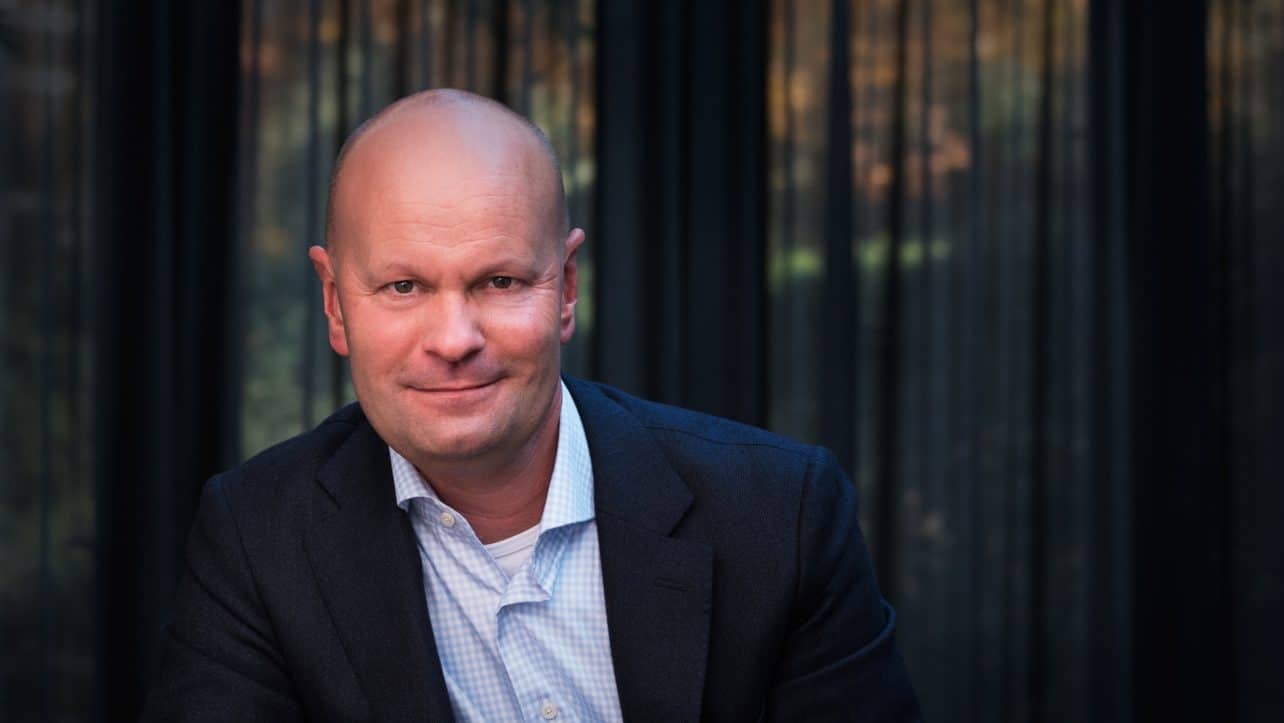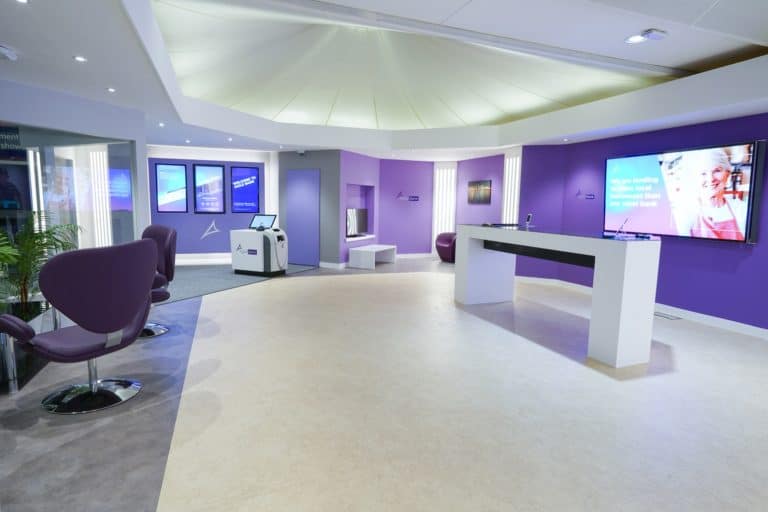The network threatens to fade into the background a bit in stories about innovation, migration and security. This is not justified, argues Joris van Oers of BT Global in conversation with us. In fact, the network is still a starting point for many of the conversations he has with customers. However, it is important that the network is intelligent. We discuss what he means by that in this article.
With two stints at KPN and since 2019 also his second at BT (as we will call the company from here on for short), Van Oers is without doubt someone with a proven track record in the telecom, IT and infrastructure market. “When I started as a commercial economist at KPN, I was gripped by mobile, internet, communications and the changes in business models that came with it,” he sums it up himself.
He has an obvious B2B preference, by the way. When KPN started to put more emphasis on B2C and Van Oers saw the new direction at BT, he decided to return to BT. At BT he is active in two areas. He is part of the so called global vertical team, in which they handle the top customers worldwide. In addition, he is responsible for BT’s activities in Europe (continental Europe, so without the UK, BT’s birthplace).
Four pillars
BT is a big organization. It is much more than just the telecoms provider in the UK. About 16,000 people at BT worldwide deal with BT Global’s customers. That’s a significant part of the 110,000 people who work for BT as a whole. The company has operations in more than 80 countries. Its services are not limited to those countries, by the way. BT serves a total of 180 countries.
The company’s foundation is in infrastructure, specifically the network component. This is not surprising given its telecom roots. So the network is more or less the starting point, also for the other parts of the portfolio. In addition to infrastructure, these include cloud and security. When it comes to applications, BT focuses on cloud collaboration and everything in the field of cloud contact, as Van Oers calls it. By this he means applications for contact centers, i.e. digital customer service and other related matters. Everything that BT offers and develops in the market is based on these four pillars: network, cloud, security, and collaboration.
Internationally operating customers
BT has not only shifted and sharpened its own focus. In terms of customers, there has also been a change recently. BT had a country structure, where customers were signed and served per country. That’s not an ideal situation, according to Van Oers. “You are then competing with the whole world, while you can never do it well enough due to a lack of focus,” he states. That is why BT nowadays only focuses on internationally operating organizations outside the UK. The size of those organizations is not so relevant. It’s mainly about the distributed nature of organizations. The idea is that BT can make the difference in this segment of the market, because of its scale (more on that below).
As an example of the primacy of organizational structure over size, Van Oers compares a company (and customer) like Nestlé, which employs hundreds of thousands of people, with Kärcher. The latter “only” has 10,000 employees. Even though Kärcher may not be as big as Nestlé, it does operate in 78 countries. This requires specific capabilities of the network, regardless of the number of employees. In terms of infrastructure, but also the other pillars on which BT’s strategy is built.
Cloud and security are nothing without infrastructure
We already stated above that BT has the (intelligent) network as a starting point. There is a good reason for that. Van Oers sums it up in the following statement, based on his conversations with parties in the market: “The reward of going to the cloud is certainly seen by customers, but that also means that the complexity only increases, which makes them more vulnerable from a security perspective.” Security and cloud are thus more than just sideways connected to the network (and each other), is the point Van Oers wants to make. You could even argue that there’s an almost 1-to-1 relationship between security and cloud on the one hand and infrastructure on the other, is his view. So the focus on an intelligent network does not only mean focus on the infrastructure, but also certainly the relationships with the other components.

Here, of course, we have to make a distinction between BT’s customer base, which consists of purely internationally active and often very large customers, and the rest of the world. There will also be plenty of (much) smaller organizations for whom the current mantra that the Internet is the new network works just fine. They don’t have special infrastructure needs. For those customers, the above statement does not necessarily apply. But then, that is not the target group that BT has in mind.
Security is a priority
Based on the above, you might think that BT primarily has a lot of in-house specialists in the field of infrastructure. The reality is somewhat different, emphasizes Van Oers. They have a lot of in-house knowledge and specialists on security too. “We employ around 3,000 security specialists worldwide and are among the top 10 in the security field,” he indicates. Furthermore, BT has 16 SOCs worldwide, which monitor a total of 2 million events per second. These are not the statistics of a company that sees security as an afterthought, but thos of a company that sees it as a priority.
Note that BT works with an ecosystem of partners, in order to provide the desired cybersecurity to customers. It does not itself develop software for detection and remediation, for example, something that a company like NTT Security (now part of NTT Ltd) does. “We build a service with all the components from the ecosystem in it,” Van Oers points out. That is, BT creates a kind of OTT overlay on top of the partner offerings they carry. That overlay aggregates the outcomes.
Asked for an example of an OTT service, Van Oers mentions the Eagle-i platform. With this platform, BT offers predictive security. The special thing about this platform is that it not only uses BT’s 16 SOCs, but also the infrastructure of BT’s major customers. The market fights the threats together. “There is a huge willingness among internationally operating companies to do this together,” he indicates.
Infrastructure at scale
One of the reasons the Eagle-i platform can be effective is its scale. Scale is something that BT is largely about anyway. This is visible in the focus on customers with scale, but of course also the scale of BT’s own infrastructure, possibly combined with that of third parties in countries where BT itself is not located. Without that scale, a platform like Eagle-i is a lot less powerful than it is now.
The fact that BT offers 180 products and services is obviously also very important for large organizations. The procurement of global infrastructure and services, at the scale of BT’s customers, is something organizations really never want to do themselves. SD-WAN is a great example of this. In theory, SD-WAN makes it possible to take much of your network procurement and management in-house. That all sounds very interesting, but in practice two internet connections are usually not enough to keep applications continuously available, Van Oers points out. For that you really need to go in the direction of dedicated infrastructure from BT, for example.
Knowledge and skills at scale
In addition to availability, there is another argument among BT’s customers for not wanting to do it all themselves. They often lack the knowledge to do it properly. “Knowledge is actually always very underestimated,” says Van Oers. And if knowledge is not already underestimated, there is still the shortage in the labor market. Cybersecurity is one such part of the labor market where the demand is many times greater than the supply. To deal with issues such as a lack of knowledge and people at customers, BT has several Operations Hubs worldwide. BT manages customers from these these knowledge and operations centers. Operations Hubs also make it possible to standardize, Van Oers points out. “Many customers really want that too, to move away from customization and toward a standard as much as possible,” he states.
In conclusion: it’s not all about infra
It’s not all about the “hard” business story of BT, though. There is another side to BT, one you might not immediately expect: psychology. That’s what we want to end this article with. Of the 600 million pounds that is annually put into R&D, especially at Adastral Park in the UK, a portion goes to studying sociological and psychological aspects. Studies into how people work best from home for example, or into what will happen after we get rid of corona, but also into how contact centers deal with the impact of the corona virus. Also think about the role of the office building after corona is finally over. Companies need to start using that in a way that encourages and optimizes collaboration.
Ultimately, being able to collaborate optimally is a shared characteristic between the infrastructure story and what is being researched in the field of sociology and psychology at Adastral Park. BT’s customers actually want the same thing in both areas. Their global business needs to keep running optimally, both from the perspective of the infrastructure and from the perspective of the people who use it. And that is ultimately BT’s goal as well.
